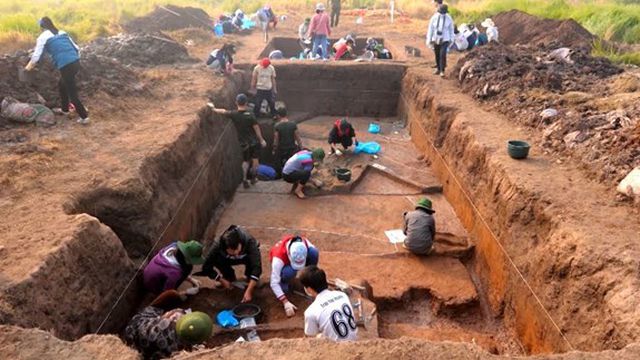 Life & Style
Life & Style


|
| An excavation at Vườn Chuối site, where archaeologist have found continuous traces of habitation in varioús historical periods. — Photo thethaovanhoa.vn |
HÀ NỘI — The Ministry of Culture, Sports and Tourism has just issued a decision to grant permission to Hà Nội Landscapes Management Board and the Việt Nam Archaeology Institute to conduct another excavation at Vườn Chuối site in Hoài Đức District, in the western outskirts of Hà Nội.
The excavation will be conducted on a total area of 150sq.m at the site between March 20 and May 15, 2020, which is led by Prof Bùi Văn Liêm, from the institute.
During the excavation, the agencies should pay attention to protecting soil layers at the site and have the responsibility of raising local awareness on preserving the site, the document states.
Objects unearthed during the excavation will be restored at Hà Nội Museum and Hà Nội Culture and Sports Department will be responsible for protecting the objects, it says.
The department will then be responsible for consulting the ministry on methods to preserve the objects, the document stresses.
The concerned agencies should report to the ministry on the results of the excavation within three months after the excavation ends, the document says.
The Vườn Chuối (Banana Field) site was first discovered by archaeologists in 1969. Over the past 50 years, various excavations have unearthed secrets of the past and revealed sketches of the lives of a community 3,500 years ago in today’s Hà Nội.
According to archaeologists, the site is the only place in the city where they have seen continuous archaeological layers of habitation from the Phùng Nguyên (2000-1500BC), Đồng Đậu (1500-1000BC), Gò Mun (1000-600BC) to pre-Đông Sơn and Đông Sơn (700BC-AD100) eras while other excavation sites have disappeared due to urbanisation.
At the end of the last year, archaeologists voiced their concerns over illegal looting of antiques at the site and the construction of a new urban area threatened to bury most of the site. They suggested city authorities preserve the site as a historical park for future excavations when there is more equipment for research. — VNS




